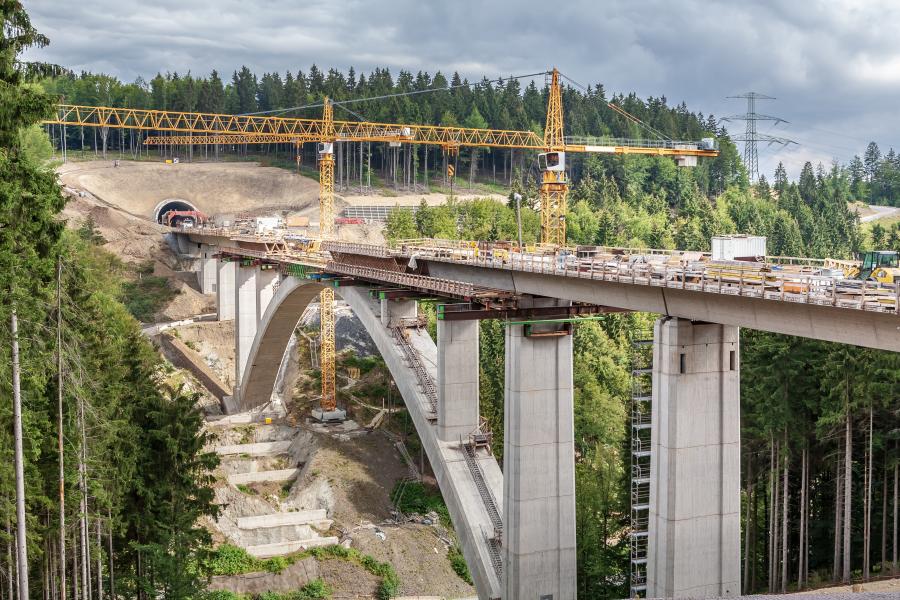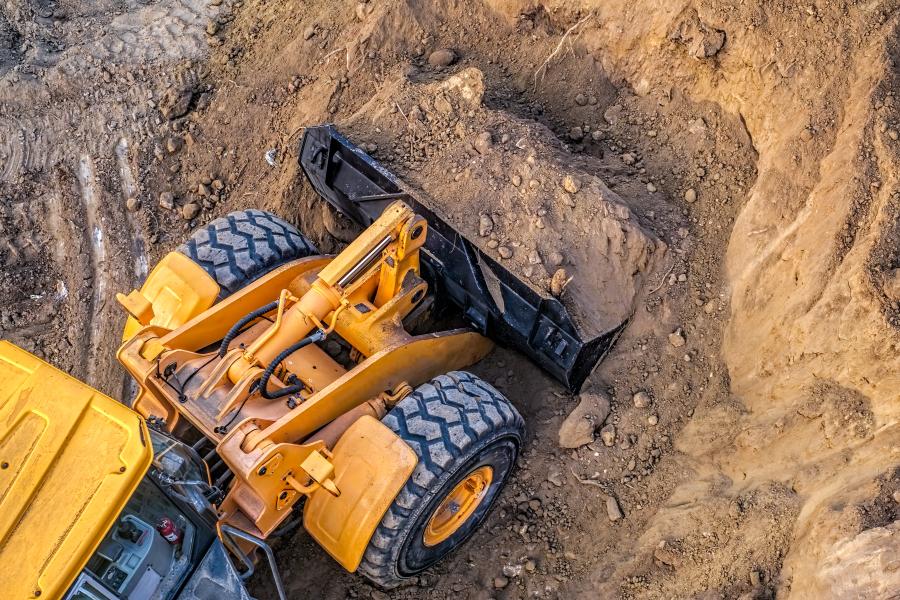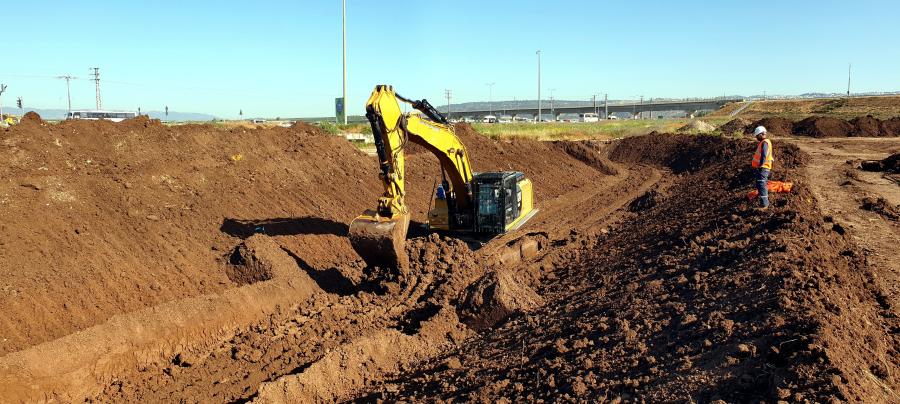AI is being used to process project data, manage resources including budgets, materials and energy, and automate processes to free up time for other tasks.
A push for streamlined workflow and a strong commitment to safety on the job site have the construction industry adopting and integrating automation and technologies as fast as a new product or service pops up on the market. Cutting-edge BIM (building information modeling), automated data collection and artificial intelligence are very real, and very visible on job sites today.
The idea that the construction industry is far behind in embracing modern technology in its day-to-day operations has been proven wrong again post-COVID.
That's the word after observations by IntellectSoft, a digital transformation consultant and engineering firm.
"The reality is, compared to others, engineering and construction stepped out of the pandemic crisis in a better state despite all odds," said the company. "Many wonder where such a drive came from. Well, the allowance for sustainable growth and new use of technology in construction made it all possible."
David Mitchell, founder and CEO of construction technology company XYX Reality, agreed.
"Many construction sites today look like something out of a sci-fi movie," said Mitchell.
Sites are filled with automated robots, extended reality headsets, touchpads and everything with a flashing light, Mitchell said. "Increasingly complex software — and hardware — is changing the construction industry."
In fact, construction technology investment hit $5.38 billion in 2022, according to investment specialists Cemex Ventures.
Suite of Complements
Mitchell said BIM alone has virtually eliminated the cumbersome process of communicating, from the back office to the job site, the daily operation plan.
"This digitization of the design and build process gives construction crews and engineers the ability to manipulate, simulate and visualize models in real time," he said.
An expanding suite of complementary technologies that integrate with BIM are bringing digital designs into the physical world. That's making it easier to build to specs, boosting construction to eliminate rework, said Mitchell, in management consultant Fast Company's website blog.
Field engineers can compare holograms of 3D design models to real-world structures using Augmented Reality (AR). They can monitor a building in real-time using sensors to compare it against a digital twin and proactively identify errors.
Finally, said Mitchell, "construction is going digital, taking human error out of the picture once and for all — a critical step in eliminating error."
The accuracy and speed of digital information means it can be shared easily, especially using cloud platform. Digitally enabled hardware can collect data in the field. This feature establishes a home for artificial intelligence (AI) in construction, said Mitchell.
Compute vision (CV) brings AI to life by analyzing images. It also can monitor environments and identify any perceived safety risks on the job site.
AI can "handle project data, managing resources like budgets, materials and energy to automate processes" that ultimately free up time for other tasks, he said.
Another headache eliminated from the project: rework. A "stubborn stumbling block," rework is quickly becoming a thing of the past.
"Architects, engineers and construction crews are already adopting cutting-edge technology," said Mitchell.
Lead general contractors are seeing the returns, reporting as much as nine times ROI, he said.
"We've seen AR reduce rework to as little as one percent on projects, providing cost and environmental savings."
Mitchell believes it'll take time to convince an entire industry to "adjust to this futuristic normal," and confidence is needed.
"But it's already happening and is accelerating," he said. "It's catch on quickly — or be left in the dust."
Getting On the BIM Bandwagon
Each software component to a BIM system is unique in one way or another, said Jim Stephen, account executive of Microsol Resources.
But all the components have a common goal for their users of managing projects more effectively and efficiently, said Stephen in an article for ohsonline.
Software functionalities include the ability to create accurate 3D project models including all elements and phases of construction.
Data management is another BIM feature, tracking performance metrics, material specs and cost information, said Stephen. The systems allow multiple stakeholders to work together on a project in real time via cloud-based platforms. And the renderings they offer are realistic images of a project, designed for client presentations and reviews.
BIM features can analyze and simulate the design of a project to identify potential problems on the job. These functionalities are capable of estimating the cost of the project and then creating a completion timeline.
"This list is also growing," said Stephen. "As technology continues to develop and more products hit the market, there will be new ways in which BIM can be used."
Construction site safety is a key benefit of BIM. It can play a major role in eliminating risk by providing a common digital platform for stakeholders, he said.
The technology improves hazard prevention "perhaps the most beneficial way in which BIM can support safety on construction sites."
First, it can help with the development of a detailed plan covering all steps of the project and can identify potential risks along the way, said Stephen.
"This makes it easier to identify areas that may be more prone to hazardous activity and proactively address them before construction starts."
The digital reports and simulations generated are valuable in understanding the risks associated with a particular task.
"This aids in creating safer conditions for works, as well as reducing the time and effort spent on rectifying errors."
And, said Stephen, BIM's ability to streamline communication among different teams on a site is key to ensuring safety during construction.
"By creating a single source for project information and a platform for real-time collaboration, BIM can reduce the risk of miscommunication or mistakes."
The technology also allows stakeholders to coordinate and visualize onsite spatial relationships to reduce hazards associated with the site's physical layout.
This includes the ability to measure distances between objects, identify blind spots and assess interferences between different areas of the site.
"Such planning can reduce the likelihood of accidents due to inadequate space or incorrect placement," Stephen said.
A BIM construction site simulation offers workers a virtual walk-through of their workspace, as well as the potential hazards they may come across.
Finally, BIM enables architecture, engineering and construction professionals to standardize and prefabricate components and materials in a controlled environment.
"This contrasts with the traditional way of doing things on site, which is often unpredictable and chaotic," said Stephen. "In a digital environment, engineers can accurately assess each element to make sure it is safe and suitable for use in the actual construction process."
Experts consider BIM a critical component of the modern AEC industry's innovation and eventual transition into a fourth revolution, said Stephen.
"Its capabilities are a significant upgrade from decades past, when professionals would rely on multiple physical plans and tools throughout the building process."
Other Technologies Gaining Ground
Beyond BIM and automation, self-repairing materials, drones, virtual reality and sustainability are at play in the "coolest" construction technologies in use today.
Trimble believes that self-healing building materials such as concrete made from fungi "might not be as far-fetched as it sounds."
In the company's Viewpoint blog, Charity Heller wrote that technologies are in fact being developed using bacterial or enzymes to create self-healing concrete.
Synthetic building material can strength and grow itself, "meaning stronger and more durable structures, and longer time in between maintenance," wrote Heller.
With augmented and virtual reality tools, workers are able to accurately test out designs, plan projects and create 3D models of their build specs.
"The virtual environment helps construction professionals undertake complex engineering tasks with stunning visuals, a wider range of materials and collaborative working options," said Heller. "Augmented and virtual reality tools are starting to replace traditional methods like paper blueprints with interactive visualizations."
This in turn allows for deeper exploration of the project, leading to better results and a great deal of saved time, she said.
"Therefore, virtual reality tools are becoming essential for architects and construction workers to make sure their work is planned out correctly."
Heller said what's new in data automation is the huge volume of construction data being collected.
"More importantly, turning all that data into actionable information that can accessed by the right people," she said.
Cloud-based construction technology delivers connected, role-based information to different construction teams.
The teams may be in different locations and need different levels of access and types of information. The cloud can facilitate the sharing process.
Sustainability has been top of mind for many construction companies for a while now. Many of the cool technologies Heller discussed have the additional benefit of advancing sustainability, she said.
"But there are many new technologies that make it easier to reduce emissions, waste and use fewer resources and less energy."
Solar panels, for example, generate power, reducing energy consumption and greenhouse gas emissions.
Biodegradable materials at play now include cork, bamboo and mycelium. Use of low-carbon cross-laminated timber is set to more than triple by 2030.
And, noted Heller, prefabrication and modular building materials continue to lessen the environmental impact of the construction site.
"It's an exciting time to be looking ahead at construction technology, even if hover-cars are still a few years away." CEG
Today's top stories















